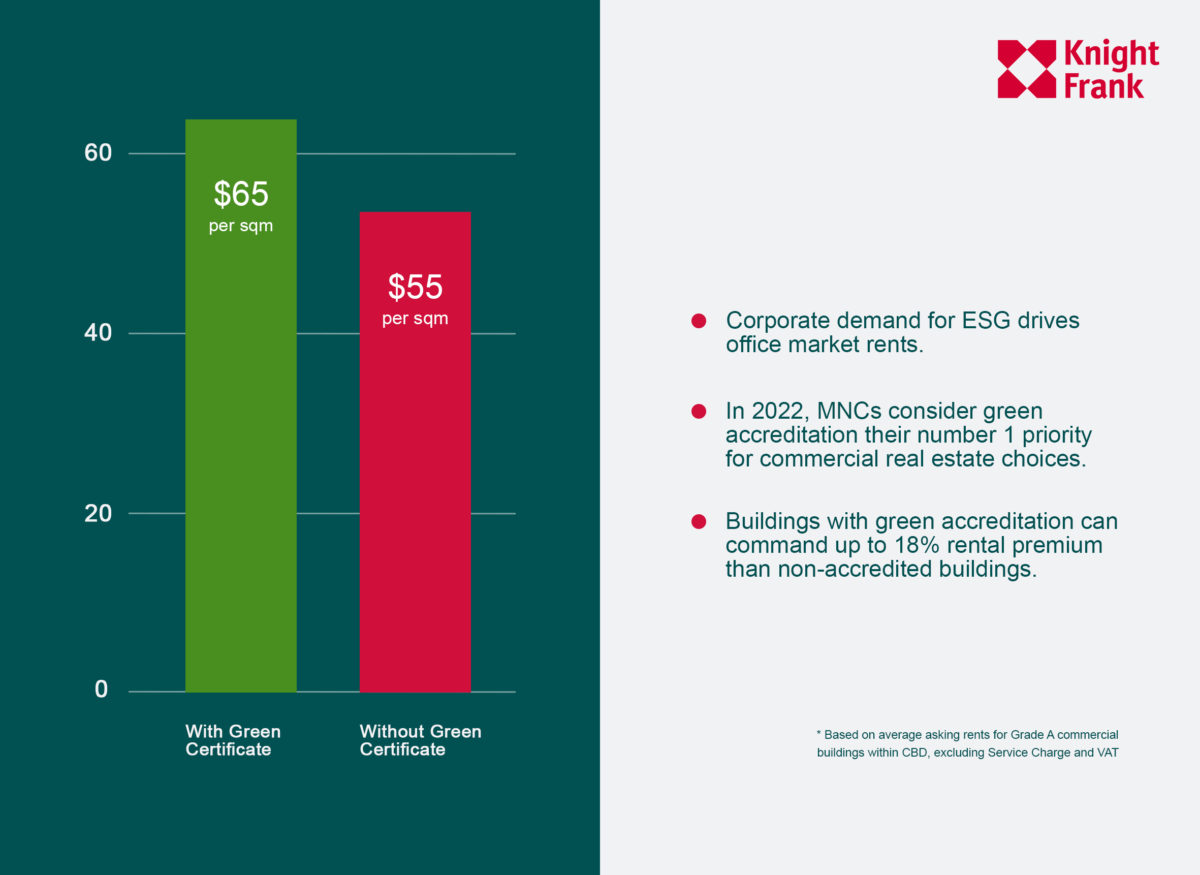Green accredited office buildings achieving 18% higher rents in Ho Chi Minh City, says Knight Frank

According to data announced this month by Knight Frank Vietnam, green certified buildings in Ho Chi Minh City are currently commanding a premium of 18% over equivalent floor space without the same accreditation.
Speaking at an event hosted by the Canadian Chamber of Commerce, Knight Frank’s Managing Director, Alex Crane highlighted that the corporate demand for ESG (Environmental, Social & Governance) initiatives is continuing to drive rents in the office market.
“Buildings with a green building accreditation such as LEED, Green Mark, or Vietnam’s Lotus certificates are now achieving rents of up to 18% higher than the non-accredited comparable buildings,” Crane stated.
These certifications typically cover energy and water efficiency, the quality of the indoor environment for its occupants, the building’s carbon footprint and offset programs, the materials used in the construction of the premises, the waste management processes of the building and so forth.
“Over the past decade we have witnessed a drastic shift toward the necessitating of ESG certification for multinational tenants. Ten years ago, it was among the top eight criteria for building selection. Ahead of the pandemic, it was in the top three. In the post pandemic era, it has risen to number 1.”
Crane said: “The pandemic has accelerated many trends in the industry and one of the most positive is focus on worker wellbeing and the environment from corporations. Companies were already aware of the benefits in terms of energy cost saving and worker productivity but post-pandemic – where the office may be used more of a hub & hybrid workplace rather than a traditional HQ – a better working environment is also attracting people back to the office.”
According to Knight Frank, there are now nine Grade A & B office buildings in Ho Chi Minh City that have a form of environmental accreditation, the first being President Place which achieved a LEED Gold in 2012 and the most recent being Friendship Tower in 2020 which achieved a LEED Gold rating. Certain buildings that have been retrofitted such as Me Linh Point Tower has also achieved Green Mark Platinum in 2020.
This tree-change in sentiment extends beyond the corporate sphere, according to Ralf Matthaes, Managing Director of Infocus Mekong Research, who noted a shift of focus from downtown ‘hubs’ to a desire for land outside of the core cities, with the pandemic spurring a shift in the patterns of consumers in-line with their MNC employers, seeking wider spaces and greener environments.
According to Matthaes: “Over the past two years we have noticed consumers moving away from a desire for apartments and are now looking for land, specifically outside of the CBD and core Hanoi and HCMC areas, as these options lend to more affordable prices. At present 39% of all surveyed are looking to purchase property, of which 20% are looking for land, while only 7% are searching for apartments.”
“This also aligns with a new meta-trend, brought on by COVID, of de-urbanization. Over 50% are genuinely interested in looking for work and living spaces outside of the central core districts of Hanoi & HCMC, leading to the high potential of an increased sub-urbanization of Vietnam.”
“This in turn has both positive and negatives. On the plus side, the development of suburbia in Vietnam could lessen the strain on urban infrastructure; but on the other hand it could negatively impact companies’ abilities to hire staff. However, until Vietnam’s infrastructure catches up with suburban travel needs, suburb life may be slow to evolve,” he concluded.
Crane had added that while pricing for apartments and landed villas had remained stable over the pandemic there is a surplus of apartments and vacant property to rent which might suggest that owner occupiers are moving further away from the city. Crane added: “When rents are not rising as in line with sales prices that obviously creates compression of yield and it may also suggest that investors see land as a more likely commodity to increase in future value than apartments and villas.”



